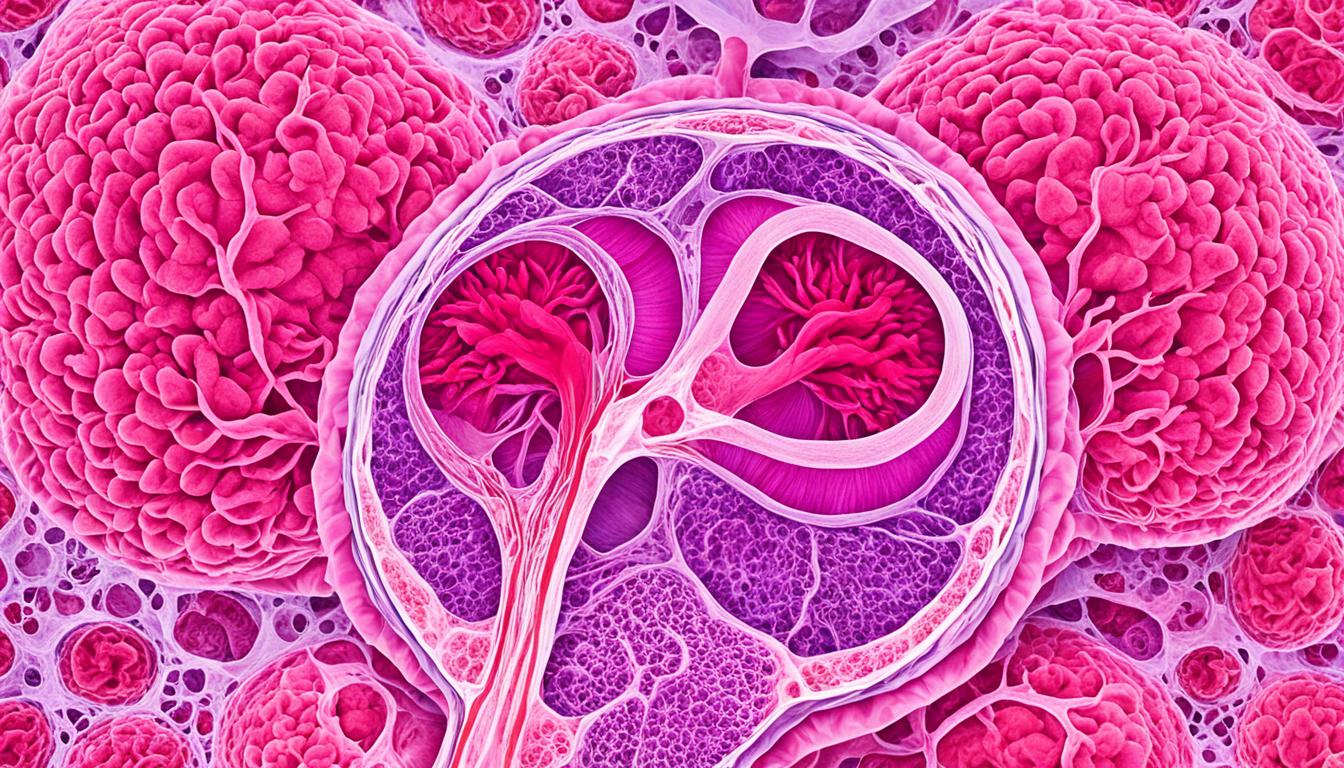A double uterus is a rare issue in the female reproductive system. It happens in about 1 in thousands of women. This problem can complicate pregnancy, birth, and cause infertility. But, new stem cell therapies might change how it’s treated.
Key Takeaways:
- A double uterus, also known as uterus didelphys or uterus septum, is a rare congenital abnormality.
- It can lead to complications in pregnancy and childbirth, including a high risk of miscarriage, premature birth, and stillbirth.
- Advancements in stem cell therapy are providing new treatment options for double uterus disease.
- Stem cell therapy has the potential to regenerate and repair damaged tissues in the uterus.
- Further research is needed to fully understand the benefits and efficacy of stem cell therapy for double uterus disease.
What is a Double Uterus?
A double uterus is a rare condition that some women have. It means they have two parts to their uterus instead of one. This can cause problems in getting pregnant and giving birth. The two parts may be fully separated or partly joined.
There are two main types of double uterus. In one type, a wall (septum) splits the uterus into two. In the other type, the top part of the uterus looks heart-shaped. Each part might have its own cervix and fallopian tube.
Having a double uterus can lead to issues during pregnancy. These include loss of the baby, slow growth of the baby, and having the baby too early. It can also cause problems for the mother and the baby during birth.
Today, stem cell therapy is being studied for double uterus. Researchers think this therapy might help fix the uterus, making it easier for women to have babies.
Symptoms of Double Uterus
Many women with a double uterus don’t feel any different. But sometimes, they might have:
- Abnormal menstrual bleeding
- Painful menstrual cramps
- Recurrent urinary tract infections
- Trouble getting pregnant
Diagnosis of Double Uterus
Doctors might find a double uterus during a routine checkup or some tests. They could do:
- Ultrasound – A safe test that uses sound waves to see inside the body.
- Magnetic Resonance Imaging (MRI) – It’s a more detailed test that gives doctors a full view of the uterus.
- Hysterosalpingogram – A special X-ray to check the shape of the uterus and fallopian tubes.
Causes, Symptoms, and Diagnosis of Double Uterus
The cause of a double uterus is not clear yet. It is thought to be linked to genes. Women with this condition may have one cervix and one vagina, or each uterine cavity may have a separate cervix.
Symptoms of a double uterus can be hard to notice. They vary between people. Some might feel pain during their period or sex. Others might not feel anything wrong. Usually, doctors find it during a routine checkup or imaging tests.
Diagnosing a double uterus involves exams and imaging. Doctors use tests like:
- Ultrasound: This test uses sound waves to make images of the pelvic organs. It checks for a double uterus and its type.
- Sonohysterogram: This includes injecting saline into the uterus and then doing an ultrasound. It makes detailed images of the uterus to find any problems.
- Magnetic resonance imaging (MRI): MRI scans use magnets and radio waves to show detailed organ images. They help spot different uterine problems.
- Contrast X-ray of the fallopian tubes: This test uses a contrast dye and X-rays. It looks at the uterus and checks for issues like blockages.
After a diagnosis, more tests might check if it affects fertility or pregnancy.
Stem Cell Therapy as a Potential Treatment for Double Uterus
Stem cell therapy offers a new hope for women with a double uterus. This condition is also called uterus didelphys or uterus septum. Recent studies show that certain stem cells, called myometrial stem cells, can heal the uterus. These cells come from the patient’s own body or from umbilical cord blood.
Myometrial stem cells can change into different cell types, such as muscle and endometrial cells. This ability means they may help rebuild the uterus. This could lead to better chances of getting pregnant for those with a double uterus. Still, more studies are needed to fully grasp how useful stem cell therapy can be for uterine issues.
Doctors and scientists are excited about the potential of stem cell therapy. They hope it can be a breakthrough for those with a double uterus. As more progress is made in this field, stem cell therapy might become an effective treatment. This could change the way we think about and treat uterine malformations.

